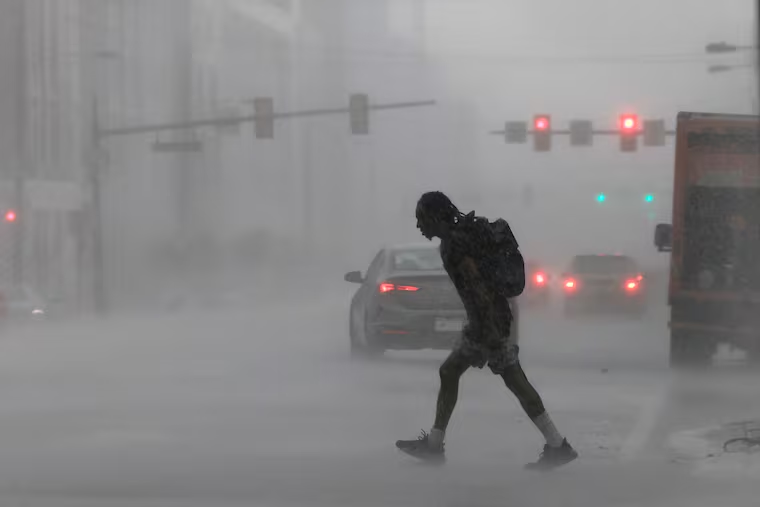California wildfires have become increasingly frequent and severe, raising concerns about their underlying causes. While wildfires have always been a natural occurrence in the region, climate change has significantly exacerbated their likelihood and intensity. Rising global temperatures, prolonged droughts, and erratic weather patterns have created the perfect conditions for wildfires to ignite and spread. This article explores how climate change has contributed to the worsening wildfire crisis in California and what can be done to mitigate its impact.
The Role of Climate Change in Wildfire Risk
Wildfires in California are driven by a combination of factors, including human activity, natural weather patterns, and environmental conditions. However, climate change has intensified these factors, making wildfires more destructive and difficult to control. Several key climate-related contributors have played a crucial role in increasing the risk of wildfires in the state.
Rising Temperatures
One of the most significant ways climate change has influenced California’s wildfire crisis is through rising temperatures. The state has experienced record-breaking heatwaves, with some areas exceeding 120°F (49°C). Warmer temperatures contribute to drier vegetation, which becomes more susceptible to ignition. Studies have shown that for every 1.8°F (1°C) increase in temperature, the likelihood of wildfire occurrence increases substantially.
Prolonged Drought Conditions
Drought is another critical factor in California’s escalating wildfire crisis. Climate change has disrupted precipitation patterns, leading to extended dry spells and reduced water availability. The lack of moisture in the soil and vegetation creates highly flammable conditions, making it easier for wildfires to ignite and spread. The state has experienced some of the worst droughts in recorded history, with the period from 2012 to 2016 being one of the driest ever.
Changing Rainfall Patterns
In addition to drought, California has seen erratic rainfall patterns. While some areas experience prolonged dry periods, others face sudden and intense rainstorms. This inconsistency leads to rapid vegetation growth during wet periods, followed by extreme drying when temperatures rise. The result is an abundance of dry fuel that serves as kindling for wildfires. Climate change has disrupted the balance of California’s natural ecosystem, making it more vulnerable to fire outbreaks.
Increased Wind Activity
Strong winds play a crucial role in the spread of wildfires, and climate change has contributed to more extreme wind events. The infamous Santa Ana winds, which occur in the fall, have become more intense in recent years. These winds can carry embers over long distances, causing new fires to ignite far from the original source. As climate change continues to alter atmospheric conditions, wind-driven wildfires are expected to become even more severe.
The Human Cost of Wildfires
The increasing frequency and severity of wildfires in California have had devastating effects on human life, property, and the environment. The impacts are far-reaching and include loss of life, displacement, and economic hardship.
Loss of Life and Property
Wildfires have claimed thousands of lives and destroyed countless homes, businesses, and infrastructure. The Camp Fire of 2018, the deadliest wildfire in California history, killed 85 people and destroyed nearly 19,000 structures. Such disasters have left communities devastated and struggling to rebuild.
Health Impacts
Smoke from wildfires poses a severe health risk to residents, particularly those with respiratory conditions. Wildfire smoke contains harmful pollutants such as carbon monoxide, fine particulate matter (PM2.5), and volatile organic compounds (VOCs). Prolonged exposure to these pollutants can lead to respiratory diseases, cardiovascular problems, and other serious health conditions.
Economic Consequences
Wildfires have significant economic consequences, costing billions of dollars in damages and firefighting efforts. Businesses suffer losses due to evacuations, tourism declines, and property destruction. Insurance companies face increased claims, leading to rising insurance costs for homeowners in fire-prone areas. The economic burden of wildfires continues to grow as climate change fuels more frequent and intense outbreaks.
Environmental Consequences of Wildfires
Beyond the human toll, wildfires have severe environmental consequences that can persist for years.
Destruction of Ecosystems
California is home to diverse ecosystems, including forests, grasslands, and wetlands. Wildfires can decimate these ecosystems, leading to habitat loss for countless plant and animal species. Some species, such as the California spotted owl and the Pacific fisher, are particularly vulnerable to habitat destruction caused by wildfires.
Carbon Emissions and Air Pollution
Wildfires release massive amounts of carbon dioxide (CO2) into the atmosphere, contributing to climate change. The loss of forests also reduces the planet’s ability to absorb CO2, further exacerbating global warming. Additionally, wildfire smoke contributes to air pollution, affecting air quality in both local and distant regions.
Soil Erosion and Water Contamination
After a wildfire, the loss of vegetation can lead to severe soil erosion. Without plant roots to hold the soil in place, rain can wash away topsoil, leading to landslides and flooding. Additionally, burned areas can release harmful chemicals into nearby water sources, contaminating drinking water and affecting aquatic life.
Mitigating the Impact of Climate-Driven Wildfires
While climate change has intensified the wildfire crisis, there are steps that can be taken to mitigate its impact and prevent further devastation.
Reducing Greenhouse Gas Emissions
Addressing climate change is crucial in reducing the severity of wildfires. Governments and individuals must take action to cut greenhouse gas emissions by transitioning to renewable energy sources, improving energy efficiency, and adopting sustainable practices. Reducing carbon emissions can help slow global warming and decrease the risk of extreme weather events.
Improved Forest Management
Proper forest management practices can help reduce wildfire risk. Controlled burns, also known as prescribed burns, are an effective way to clear excess vegetation and prevent large-scale fires. Thinning forests and creating firebreaks can also help slow the spread of wildfires and protect communities.
Enhancing Early Detection and Response
Investing in advanced wildfire detection and response systems can improve preparedness and reduce fire damage. Technologies such as satellite monitoring, AI-driven fire prediction models, and automated alert systems can help detect wildfires early and deploy resources more efficiently.
Strengthening Community Resilience
Communities must be prepared for wildfire emergencies by implementing fire-resistant building codes, creating defensible spaces around properties, and developing evacuation plans. Public awareness campaigns and education programs can help residents understand fire risks and take proactive measures to protect themselves and their homes.
Conclusion
Climate change has significantly worsened the likelihood and intensity of wildfires in California. Rising temperatures, prolonged droughts, changing rainfall patterns, and increased wind activity have created ideal conditions for wildfires to thrive. The consequences of these fires are devastating, affecting human lives, economies, and ecosystems. However, by taking action to address climate change, improve forest management, and enhance wildfire preparedness, it is possible to mitigate the impact of wildfires and protect future generations. The urgency to act is greater than ever, and it is imperative that governments, communities, and individuals work together to combat this growing crisis.




